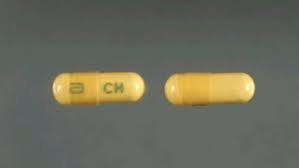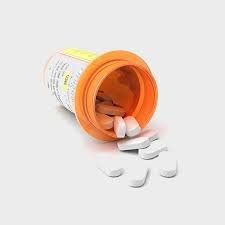Introduction to Phenobarbital
Phenobarbital, a prominent member of the barbiturate class of drugs, was first synthesized in 1912 and has since played a pivotal role in the treatment of various medical conditions. The chemical structure of phenobarbital comprises a barbituric acid core, with a phenyl group attached to the nitrogen atom, which imparts unique pharmacological properties to the compound. This structure underpins phenobarbital’s ability to modulate the central nervous system (CNS), making it an effective therapeutic agent.
The mechanism of action of phenobarbital involves potentiation of the gamma-aminobutyric acid (GABA) neurotransmitter system. By binding to GABA_A receptors, phenobarbital enhances the inhibitory effects of GABA, resulting in reduced neuronal excitability and the stabilization of the CNS. This sedative and anticonvulsant activity is what positions phenobarbital as a valuable medication for managing conditions such as epilepsy and anxiety disorders.
Classified within the barbiturate family, phenobarbital distinguishes itself due to its relatively lower risk of dependence compared to other barbiturates, yet it should still be administered with caution due to its potential for abuse. Despite the emergence of newer pharmacotherapeutic options, phenobarbital remains a cornerstone in the treatment of seizure disorders, especially in resource-limited settings where access to other anticonvulsives might be restricted.
The historical significance of phenobarbital in medicine cannot be understated. Recognized by health organizations such as the World Health Organization (WHO), it is listed on the WHO Model List of Essential Medicines, underscoring its indispensable role in global health. Phenobarbital’s enduring presence in both the clinical and pharmacological landscapes attests to its efficacy and importance as a therapeutic agent.
Phenobarbital in Anti-Seizure Management
Phenobarbital has long been a cornerstone in the realm of anti-seizure management, particularly for those suffering from epilepsy. As an effective anticonvulsant, its efficacy is well-documented through various clinical studies and substantial patient outcomes. Phenobarbital operates by enhancing the action of gamma-aminobutyric acid (GABA), an inhibitory neurotransmitter, which leads to increased neuronal inhibitory effects and stabilization of the neuronal membrane. This mechanism is crucial in reducing the frequency and severity of epileptic seizures.
The pharmacokinetics of phenobarbital are characterized by its slow absorption rate, with peak plasma concentrations typically reached within 12 hours of oral administration. It has a long half-life, ranging from 53 to 118 hours, which makes it suitable for once-daily dosing. This prolonged action ensures sustained therapeutic levels in the bloodstream, a significant advantage in managing chronic conditions like epilepsy. The drug undergoes hepatic metabolism, and its metabolites are excreted primarily via the kidneys.
Numerous clinical trials and patient reviews reinforce the efficacy of phenobarbital in seizure control. For instance, a study published in the Epilepsia journal highlighted that phenobarbital significantly reduced seizure frequency in 70% of participating patients. Additionally, it has shown comparable efficacy to other antiepileptic drugs (AEDs), often being more cost-effective and accessible, especially in low-resource settings.
However, the use of phenobarbital is not without caution. Common side effects include drowsiness, dizziness, and cognitive impairment, which can affect daily functioning. Long-term use can result in dependency and, in rare cases, paradoxical hyperactivity, particularly in pediatric patients. Healthcare providers must monitor patients for signs of toxicity, such as respiratory depression and hypotension. Regular blood tests are recommended to ensure therapeutic levels are maintained without reaching toxic concentrations.
Moreover, abrupt discontinuation should be avoided due to the risk of withdrawal seizures. Therefore, any changes in dosage or cessation should be meticulously planned and supervised by a healthcare professional.
Phenobarbital in Treating Status Epilepticus and Insomnia
Phenobarbital, a barbiturate with notable anticonvulsant properties, plays a crucial role in managing status epilepticus. This life-threatening condition is characterized by prolonged seizures, often refractory to conventional anticonvulsant therapies. Administered intravenously, phenobarbital acts by enhancing the inhibitory neurotransmitter gamma-aminobutyric acid (GABA) activity, thereby delivering anticonvulsant effects. The prompt administration of phenobarbital in a clinical setting can significantly stabilize patients and reduce the risk of neurological damage. Studies have indicated success rates ranging from 60% to 90% in controlling seizures, emphasizing its importance in emergency medicine.
In addition to its role in status epilepticus, phenobarbital has historical significance in managing insomnia due to its potent sedative effects. By depressing the central nervous system, phenobarbital induces drowsiness and helps patients achieve restorative sleep. This practice, while less common today due to the availability of newer sleep aids, remains a pertinent part of its therapeutic spectrum. Phenobarbital’s dosage in treating insomnia is typically lower than that for anticonvulsant purposes, often starting from 30 mg to 120 mg taken orally at bedtime. Its hypnotic effect facilitates sleep induction but comes with potential side effects such as dizziness, drowsiness, and cognitive impairment, which necessitate careful dosing and monitoring by healthcare professionals.
When compared to contemporary sleep aids like benzodiazepines or non-benzodiazepine hypnotics, phenobarbital has a longer half-life, which can cause a hangover effect. While it can be effective, the risk of dependence and tolerance makes it less favorable for long-term insomnia management. Nevertheless, in specific cases where modern alternatives are contraindicated or ineffective, phenobarbital remains a viable option under strict medical supervision. Its historical applications underscore the broad therapeutic utility of phenobarbital in neurological and sleep disorders.
Phenobarbital for Benzodiazepine and Alcohol Withdrawal
Phenobarbital has been effectively utilized in clinical settings to manage withdrawal symptoms associated with benzodiazepine and alcohol dependence. This barbiturate operates by depressing the central nervous system (CNS), which helps to mitigate seizures, anxiety, and other distressing symptoms during the detoxification process. The mechanism of action primarily involves potentiation of gamma-aminobutyric acid (GABA) activity, a neurotransmitter that exerts calming effects on the brain. Consequently, phenobarbital assists in stabilizing the CNS, creating a smoother transition during withdrawal.
Protocols for using phenobarbital in detox programs are well-established. During alcohol withdrawal, phenobarbital is often administered in a tapering schedule where the dosage is gradually reduced to minimize withdrawal symptoms while preventing potential dependency. Clinical guidelines recommend initial high doses to control acute symptoms, followed by a careful and systematic dosage reduction. For benzodiazepine withdrawal, phenobarbital serves as a cross-tolerant agent, mimicking the effects of benzodiazepines to quell withdrawal symptoms effectively.
Documented clinical evidence and success stories underline phenobarbital’s efficacy in treating withdrawal symptoms. Studies have shown that patients undergoing phenobarbital-assisted detoxification exhibit reduced anxiety, lower incidences of seizures, and overall improved withdrawal outcomes. For example, a randomized controlled trial demonstrated that phenobarbital is as effective, if not more so, than benzodiazepines in managing alcohol withdrawal symptoms, particularly in preventing seizures and delirium tremens.
However, the use of phenobarbital is not without risks. Its potential for dependency must be acknowledged, and measures to prevent misuse are crucial. Medical supervision is paramount, ensuring that the administration of phenobarbital is precisely controlled and monitored. Healthcare providers often implement stringent protocols, including regular patient evaluations and adherence to dosing schedules, to mitigate the risk of dependence.
In summary, the successful application of phenobarbital for benzodiazepine and alcohol withdrawal underscores the drug’s versatility and effectiveness in managing acute withdrawal symptoms. Nonetheless, its administration necessitates careful oversight to prevent misuse and safeguard patient well-being.






Reviews
There are no reviews yet.